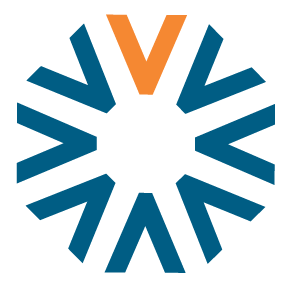Blog
HR Technology Trends for 2023 and Beyond
Wednesday January 4, 2023
Human resources are the backbone that keeps organizations afloat and the latest trends in HR technology play a key role in managing workforces.
As the world increasingly shifts towards remote working in today’s post-pandemic world, companies are swiftly adapting to digital-based software and applications to engage, collaborate and execute work deliverables without discrepancies. Recent years have thus witnessed a major surge in hi-tech HR advancements, from applicant tracking systems and employee portals to virtual reality training and machine learning algorithms.
By streamlining procedures and optimizing staff experiences, these technologies can revolutionize workforce management by helping companies attract, retain, and motivate their employees. However, they also present unique challenges and require careful consideration at the time of implementation. That said, this blog delves into some of the latest HR technology trends in the industry.
Technology Trends in Human Resources
Recent surveys have shown that 80% of people today prefer work-from-home or hybrid models, showing how well companies are adapting to emerging technologies. But what exactly is human resource (HR) technology?
The term “HR technology” refers to various programs and types of equipment that help control various aspects of human resources management – payroll, benefits, performance reviews, employee onboarding, and more.
Apart from tools for communication, collaboration and productivity, it also includes tools to track and manage staff data and records. Besides, it helps HR professionals make better decisions, automate and streamline their tasks, increase accuracy and boost efficiency.
Mentioned below are some of the latest trends in HR technology –
1. AI-enabled Data Analytics
Data analytics in HR technology is undergoing a revolution, thanks to artificial intelligence (AI). The increasing demand for more efficient and effective human resource processes and data-driven decision-making is driving this trend.
But why artificial intelligence?
Essentially, AI-powered data analytics are adept at making real-time, accurate extraction and analysis of huge data from multiple sources. Some examples include employee performance reviews, resumes, and social media profiles, to name a few. This information is further used to identify trends, patterns, and insights that help improve HR processes and optimize employee performance.
For example, data analytics can be used to predict employee churn, identify top performers, or recommend the best candidates for a job opening. Instead of relying on gut instincts or subjective evaluations, this HR tech trend enables companies to optimize performance through informed and data-driven decisions.
2. Cloud-based Human Resources Systems
The contribution of HR technology in assisting organizations to adapt and operate efficiently throughout the COVID-19 outbreak cannot be overstated. Increased adoption of cloud-based HR technology solutions has been one notable trend during the pandemic.
Here’s how remote work capabilities acted as one of its driving forces –
Organizations needed HR technology that could be accessed and used remotely because many employees worked from home. Cloud-based solutions provided employees with a convenient and adaptable way to assess HR data and complete tasks such as time sheets, benefits enrollment and performance evaluations.
As many businesses struggled financially during the pandemic, converting to a cloud-based solution also helped reduce startup costs, as well as the requirement for on-site hardware and IT support. Last, this groundbreaking technology in HR provides increased security and data protection against cyber criminals, which helped many companies save millions in data breach damages.
3. Workforce Self-Service Portals
As the popular saying goes, self-help is the best help. In the case of human resources tech, the rise of workforce self-service portals has transformed the way businesses manage their human resources.
Thanks to this technology, your team can use these portals to access and update their personal information, request time off, track their benefits and pay all from one place. These portals also include resources for training and development, company news and updates, and access to company policies and procedures.
Fundamentally, this HR tech trend gives employees more control over their HR information and allows them to actively manage their career development. Because these portals are available online, employees can access them from any location and at any time, which is beneficial for remote workers or those who work irregular hours.
Another of its primary advantages is the ability to streamline HR processes and reduce workload for HR professionals. It allows HR teams to focus on more strategic tasks and initiatives, rather than bogging themselves down with administrative tasks.
To learn how to prepare your workforce for adopting new technologies, read this.
4. Employee Engagement & Feedback Tools
Can you automate and streamline workforce analysis and development? Yes!.
Employee engagement or feedback tools became popular in the early 2010s, as businesses realized the value of continuously collecting and analyzing staff feedback to improve their experience and increase productivity.
Employee feedback and engagement have shaped the future of HR technology, due to the realization that happy employees are more productive and have higher retention rates. Recent reports show that around 51% of workers are disengaged from their work-related responsibilities.
Thus, companies want to create a positive and supportive work environment and these tools enable them to collect real-time feedback from employees and make changes to improve the employee experience.
In essence, these tools enable HR departments to easily collect employee feedback, identify areas for improvement, and implement changes to address any issues that may affect employee engagement. Often integrated into broader HR systems, they also make it easier for HR professionals to track and manage huge chunks of staff data.
5. Virtual Reality-Powered Staff Training
The AR/VR industry, in general, has massively impacted the way we perceive entertainment with its hyper-realistic simulation experience, especially since the world went into self-isolation. Recently, it has also broadened its horizons as one of the latest trends in HR technology.
The #1 reason for its rising popularity? Without a doubt, it’s the ability to create immersive and interactive training experiences. Employees can participate in simulated scenarios tailored to their particular job roles, giving them the chance to hone their skills and make decisions in a safe setting. They can also learn and practice skills at their own pace, without the risk of making mistakes in a real-life situation, allowing for a more streamlined and judgment-free training procedure.
Besides, conventional training methods frequently require employees to travel to a specific location, which can be costly and time-consuming. Employees can participate in virtual reality training from anywhere, saving money on travel and reducing training time. It is surely a win-win for both – employers and employees!
5. Blockchain Technology
With decentralized platforms and blockchain-based applications taking over the world at the speed of light, blockchain is also instrumental in shaping the future of HR technology to some extent.
Some of the first blockchain-based HR applications were created in 2017 and 2018, and the use of blockchain in Human Resources has grown in popularity since then. However, it is still in its early stages and has not yet gained widespread acceptance.
Regardless, the ability to provide secure, decentralized, and transparent record-keeping for HR processes, such as employee records, payroll, etc., has led blockchain to become the safest bet for employers.
Cybersecurity threats occur every other day, and companies mostly struggle to protect sensitive information from malicious third parties. In this context, this HR tech trend immediately eliminates the need for intermediaries, such as third-party service providers, to verify and authenticate employee data. This not only saves time and reduces the possibility of mistakes, but also provides greater privacy and security for all stakeholders involved.
To learn how to leverage automation to optimize workforce management, read this.
6. Greater Emphasis on Employee Wellness & Safety
Employee safety, well-being and support have become a high priority, as businesses continue to realize the importance of providing a safe and supportive work environment for their staff, be it in-office or remote.
With the need for tech to facilitate communication and collaboration at an all-time high, human resource departments began to adopt technology solutions to monitor and support employee well-being. This includes features such as employee tracking, emergency alerts, and mental health resources. This HR tech trend can also be used to help employees cope with stress and other mental health issues by providing relevant industry-leading resources and tools.
Future Challenges in Human Resources Technology
Although the latest trends in HR technology benefit employers and HR managers abundantly, has it completely abolished all human resources challenges? Certainly not. Here are some challenges to look out for in 2023:
1. Lack of personalized training and development opportunities
Many HR technologies only provide generic training programs that do not cater to individual employees’ specific needs and goals. This can lead to disengagement among the staff, and hamper their motivation to remain active in the team for the long term.
2. Difficulty in measuring employee engagement and satisfaction
The latest trends in HR technology frequently depend on surveys and other forms of anonymous feedback. As analytically correct as it may sound, this can be subjective and may not accurately reflect your staff’s true feelings. This makes it difficult for human resources to identify and address core issues that may cause employee dissatisfaction.
3. Poor integration with other systems
If HR technologies do not integrate well with other systems within the organization, it can lead to difficulties in managing employee data and tracking employee progress. This can lead to employee and HR frustration, which can lead to operational and retention issues.
4. Inadequate data security
Last but most importantly, the future of HR technology cannot be strong until the technologies are incredibly resilient, in terms of cybersecurity. These apps must ensure unmatched data security to prevent data breaches or theft of sensitive employee information.
Wrapping Up
The future of human resources tech is one of increased efficiency, effectiveness, and agility, and HR professionals will have an exciting time navigating this rapidly changing landscape. Employers and managers will most definitely have access to a wealth of information and tools to help them make better decisions, streamline processes, and improve employee engagement.
About Vocantas
If you’re looking for an effective communication module to enhance the workforce management system at your company, reach out to us at Vocantas for a free consultation.
For over 18 years, Vocantas has been providing extensive support to schedulers with respect to shift planning and tackling staffing challenges through real-time communication. Our complete scheduling solution is fast, easy to use, reliable, and backed by outstanding customer support. Get in touch with us here.
Stay Connected!
Subscribe to our newsletter and receive all our news and updates.
Blog
Check out our
latest Blog Posts
Cutting-edge technologies, industry trends and best
practices workforce management.

Wednesday January 29, 2025
Optimizing Workforce Efficiency with Integrated Manufacturing Scheduling Software
The manufacturing industry operates on precision and efficiency. From raw material sourcing to final product assembly, every second counts. Yet,….

Wednesday January 15, 2025
Top 5 Nursing Home Software Solutions to Invest in for Efficient Operations
As staffing shortages and external factors continue to impact the healthcare industry, nursing homes face increasing pressure to provide high-quality….

Thursday December 19, 2024
Absence Management Guide: Tools to Maximize Workplace Efficiency
Managing employee absences effectively is a cornerstone of organizational success. A well-implemented absence management system not only ensures accurate payroll….




